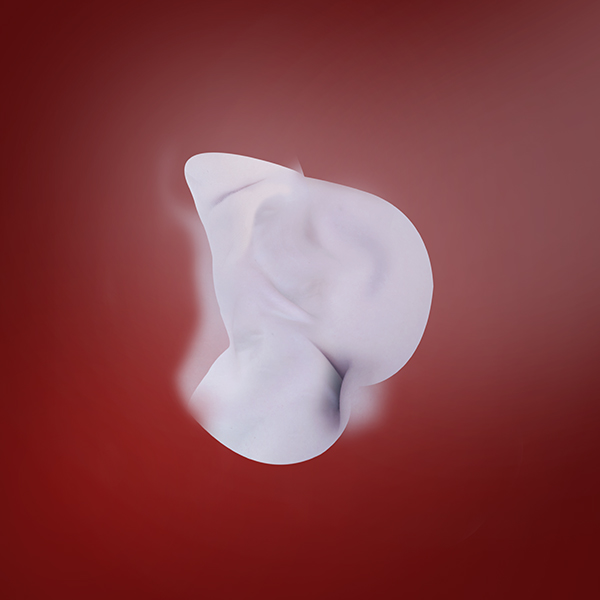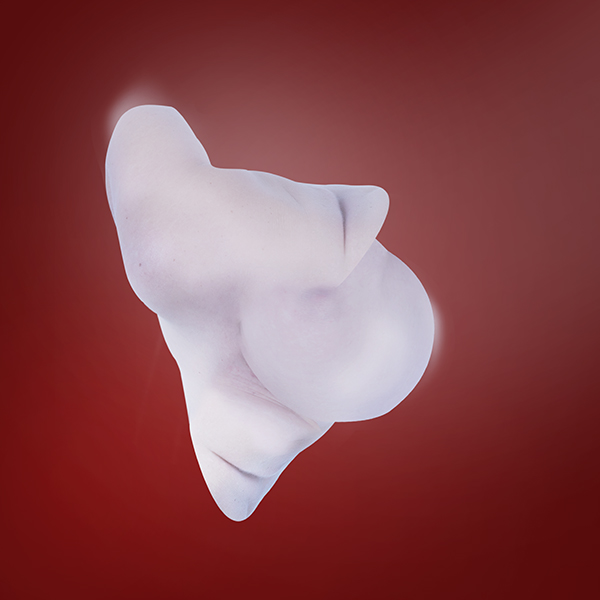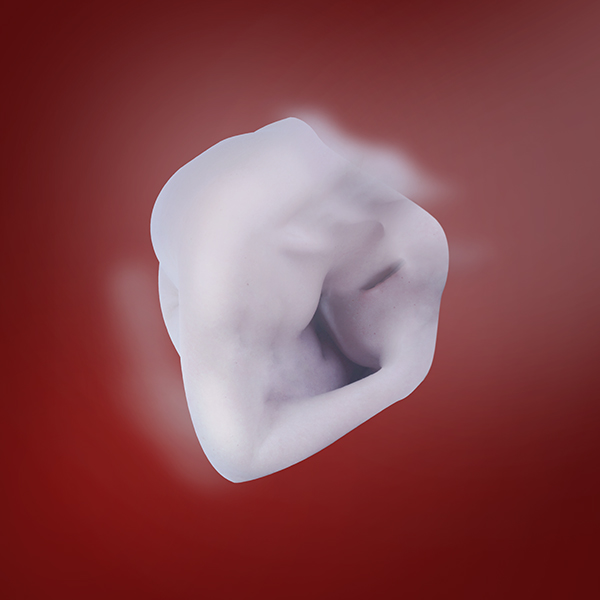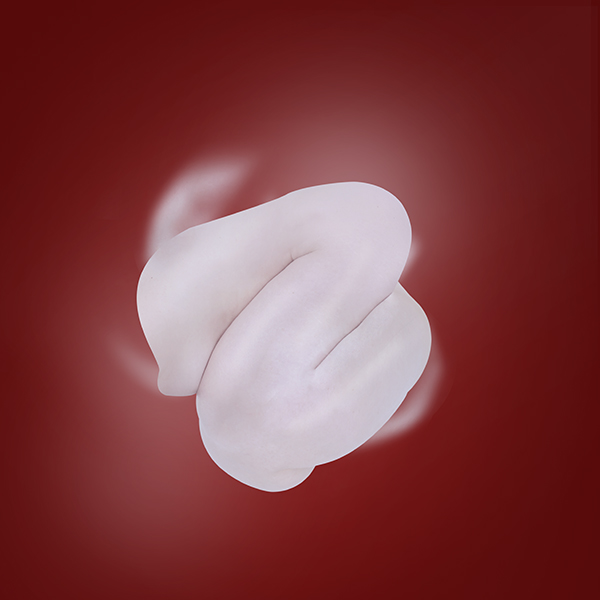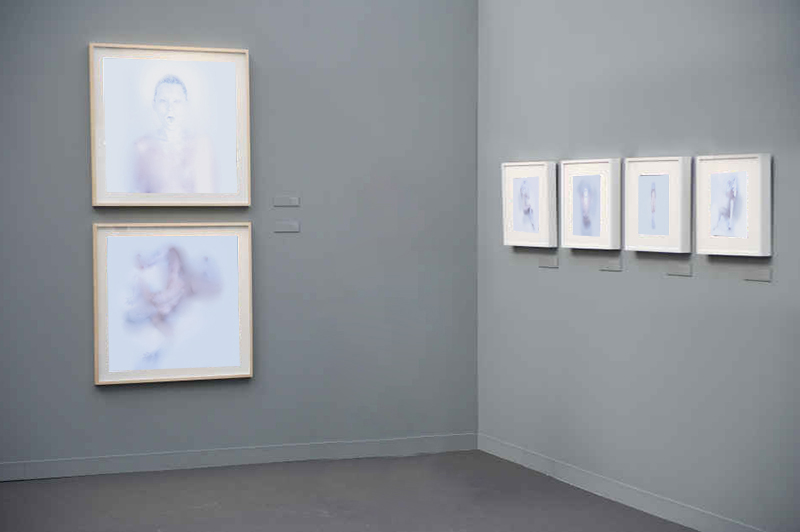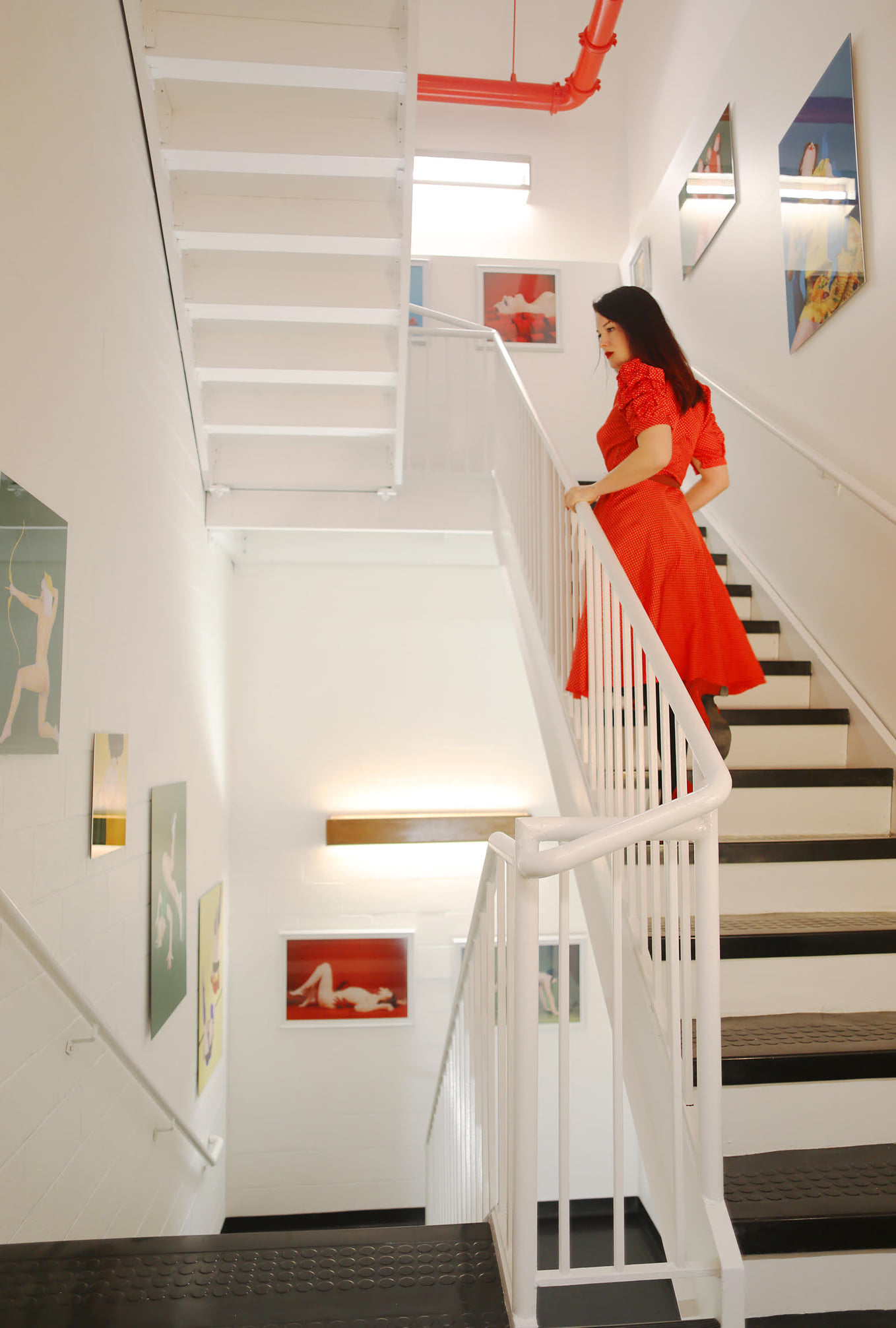Idole
12X12INCH
Francis Bacon, in his interview with Marguerite Duras, explained about his art: “I do not draw. I start doing all sorts of blotches. I wait for what I call the ‘accident’: the blotch from which the painting starts. I’ve been trying to figure out how to describe the unpredictable way that this happens. I’ve found only these words: technical imagination. You see, the subject is always the same. It is the changing of the technical imagination that can cause the subject to ‘turn’ to the personal nervous system.” […] This body, at least in the forms of the idol of Bastet, the cat goddess, or Hathor, symbolizes the principles of love, running aground on a beach of smooth sand near Sothis, fertilizing the soil.
An assemblage of organs, of anatomic substance, an elogy to feminine happiness, the fantasy of the attached self is subjected to the moods of the evil spirit, masculine and feminine.
An assemblage of organs, of anatomic substance, an elogy to feminine happiness, the fantasy of the attached self is subjected to the moods of the evil spirit, masculine and feminine. A body moved and manipulated by order of an invisible and perverse choreographer, raising our most unfathomable questions, our most enduring doubts. Unified forms, mixed with corporeal and fluid abstraction, taking pleasure in an ecclesiastical nudity. In praise of feminine happiness, like an ancient statuette, Poetess and witch of a thousand rainbows, this idol eliminates chastity and becomes a totem, a trophy. […]
Translation by Carolyne Lee
Idoles
Francis Bacon, dans son entretien à Marguerite Duras, explique à propos de son art : « Je ne dessine pas. Je commence à faire toutes sortes de taches. J’attends ce que j’appelle “l’accident” : la tache à partir de laquelle va partir le tableau. J’ai beaucoup cherché comment appeler cette façon imprévisible avec laquelle on va agir. Je n’ai jamais trouvé que ces mots-là : imagination technique. Vous comprenez, le sujet est toujours le même. C’est le changement de l’imagination technique qui peut faire se “retourner” le sujet sur le système nerveux personnel. » […] Ce corps du moins cet Idole comme Bastet, déesse‐chat ou Hathor personnifient les principes de l’amour et s’échouent sur une plage au sable lisse auprès de Sothis fertilisant les sols. Assemblage d’organes, de substance d’anatomie, l’Eloge du bonheur féminin, fantasme du soi attaché soumis aux humeurs de l’esprit malin masculin et féminin.
Assemblage d’organes, de substance d’anatomie, l’Eloge du bonheur féminin, fantasme du soi attaché soumis aux humeurs de l’esprit malin masculin et féminin.
Un corps bousculé et manipulé sous les ordres d’un chorégraphe pervers invisible. Il fait émerger nos interrogations les plus insondables et engendrent des doutes permanents. Formes unifiées, malaxées vers l’abstraction corporelle et fluide et jouissant d’une nudité ecclésiastique. Eloge du bonheur féminin, telle une statuette antique, Poétesse, et sorcière aux arcs‐en‐ciel abondants, cette idole supprime la chasteté, elle devient un totem, un trophée. […]
Texte Sid Poliakov
Date:
March 17, 2010



